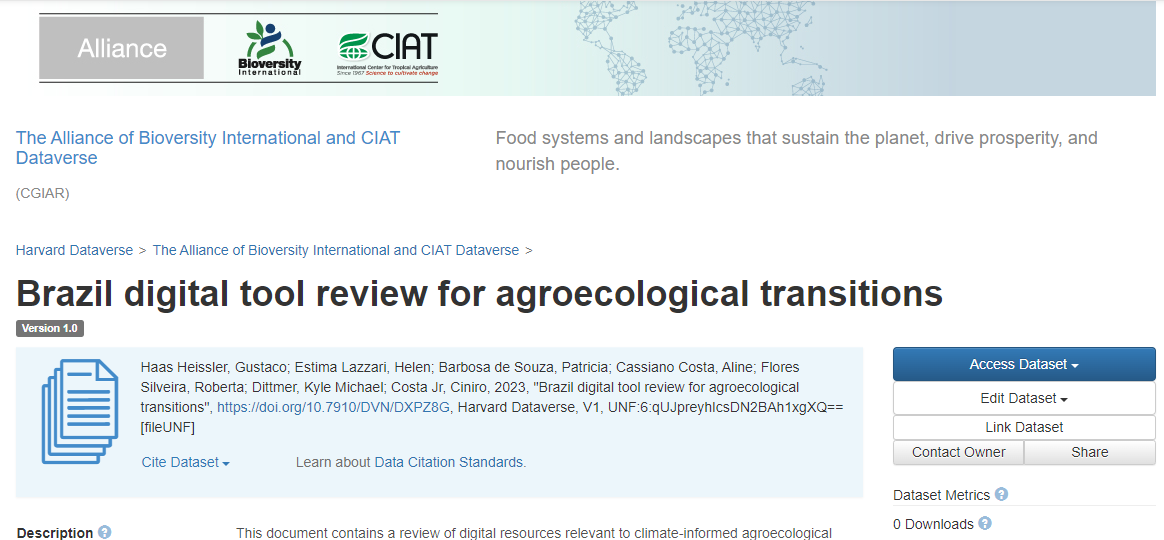Brazil digital tool review for agroecological transitions
This document contains a review of digital resources relevant to climate-informed agroecological transitions for the beef cattle sector in Brazil. The purpose of the review was to catalog relevant digital resources for beef cattle production in Brazil and assess their role in inclusive knowledge development, with special attention to farmers’ co-creation of knowledge for on-the-ground practices. To this end, we identified existing digital tools in Brazil relevant to technical advisory and performance assessment for the beef cattle sector and reviewed their functions (i.e., the purpose of using a tool) against 87 indicators for exemplary features that could support socially inclusive climate-informed agroecological transitions.
Metodology:The 87 indicators used to evaluate exemplary features of agricultural digital tools – defined here as an app, online resource (not platforms), or other software available on a digital device (e.g., phone, smartphone, computer, etc.), including those that are language, audio, and visually based - relate to seven categories (see Indicators Explained) (Dittmer et al., 2022): (i) performance assessment, (ii) technological specifications, (iii) social inclusion and co-creation, (iv) scaling, (v) climate change adaptation, mitigation and whether the tool calculates greenhouse gas emissions, and (vi) agroecological principles Exemplariness was defined in this review as best fitting the requirements of the target users and best addressing agroecological and climate change mitigation and/or adaption outcomes. All indicators for categories i-v were developed and validated via several rounds of internal reviews and expert consultations. The 12 agroecological indicators (i.e., principles) were adopted and refined from the FAO 10 Elements of Agroecology (FAO, 2018), HLPE (HLPE, 2019) and TAPE (FAO, 2019) reports. Based on lessons learned during the initial tool review, inclusion criteria included tools that: (i) provided farming technical advice or performance assessment in the beef cattle sector in Brazil, (ii) were applied, or could be applied, to smallholder farmers, and (iii) were consistently mentioned during expert interviews and other discussions. Exclusion criteria included tools that: (i) solely related to precision agriculture (e.g., agricultural drones, in-field sensors, variable rate input application technology, etc.), (ii) solely related to market access or digital finance, and (iii) did not provide enough information online. Thirty-two (32) tools were identified and fifteen (15) tools were selected for a full review against 87 indicators after the inclusion and exclusion criteria were applied. Tools were classified as technical advisory resources if they delivered any recommendations regarding farming practices and as performance assessment resources if they included a review of farm status or operations. Tools were mostly identified via Google searches, expert interviews, and platforms such as the MyAgriHub platform. Each tool was reviewed by accessing the tool, when available, or by reviewing materials online. Indicators were marked as ‘unknown’ when subjectivity in responses persisted or when information was not available. (2023-03)

